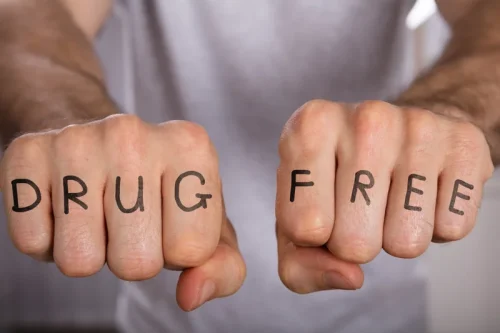
The AVE was introduced into the substance abuse literature within the context of the “relapse process” (Marlatt and Gordon 1985, p. 37). Relapse has been variously defined, depending on theoretical orientation, treatment goals, cultural context, and target substance (Miller 1996; White 2007). It is, however, most commonly used to refer to a resumption of substance use behavior after a period of abstinence from substances (Miller 1996).
Relapse Prevention And Ongoing Treatment At Bedrock
It is, however, most commonly used to refer to a resumption of substance-use behavior after a period of abstinence from substances (Miller, 1996). The term relapse may be used to describe a prolonged return to substance use, whereas lapsemay be abstinence violation effect used to describe discrete,… The Abstinence Violation Effect (AVE) is a psychological phenomenon that refers to a person’s reaction to breaking a self-imposed rule of abstinence or self-control. The abstinence violation effect (AVE) refers to the negative cognitive and affective responses that an individual experiences after the return to substance abuse after a period of abstinence.
Learn From Relapse
The AVE describes the negative emotional response that often accompanies a failure to maintain abstinence from drugs or alcohol. Altogether, these thoughts and attributions are frequently driven by strong feelings of personal failure, defeat, and shame. These negative emotions are, unfortunately, often temporarily placated by a renewed pattern of substance abuse. People in addiction recovery often experience drug cravings when they go through stress. Addiction rewires the brain to consider drug use an important source of reward.
- It’s important to establish that a one-time lapse in a person’s recovery from drugs or alcohol is not considered a full blown relapse.
- Set realistic expectations for your recovery journey, understanding that progress may not always be linear.
- Prolonged use of a substance causes a level or physical tolerance but after a period of abstinence that tolerance declines substantially.
- Relapse has been variously defined, depending on theoretical orientation, treatment goals, cultural context, and target substance (Miller 1996; White 2007).
- Overall, the Abstinence Violation Effect is a complex phenomenon influenced by a combination of cognitive, emotional, and biological factors.
- Nevertheless, 40 to 60% of people who once were addicted to a substance and achieved sobriety relapse at some point, based on estimates from the National Institute on Drug Abuse (NIDA).
For Immediate Treatment Help Call 800-526-5053
Prioritize self-care activities that promote physical, emotional, and mental well-being. Set realistic expectations for your recovery journey, understanding that progress may not always be linear. Rather than only focusing on the end goal, celebrate small victories and all positive steps you’ve taken thus far. Some examples of proven coping skills include practicing mindfulness, engaging in exercise, or pursuing activities that bring you fulfillment. Reach out to friends, family, or support groups for encouragement during difficult times.
- These patterns can be actively identified and corrected, helping participants avoid lapses before they occur and continue their recovery from substance use disorder.
- This can create a cycle of self-recrimination and further substance use, making it challenging to maintain long-term abstinence.
- I have lost all that time,” which can trigger a self-destructive mindset and potentially lead to further relapse.
- By reframing lapses as learning opportunities and teachable moments, cultivating self-compassion, and seeking support, individuals can navigate these challenges more effectively, increasing their chances of leading a healthier lifestyle.
- However, there are some common early psychological signs that a relapse may be on the way.
- These emotional and cognitive reactions intensify the Abstinence Violation Effect, which may lead to a further loss of control and increased vulnerability to subsequent relapses or deviations from the established rule.

One of the key features of the AVE is its potential to trigger a downward spiral of further relapse and continued substance use. AVE also involves cognitive dissonance, a distressing experience people go through when their internal thoughts, beliefs, actions, or identities are put in conflict with one another. Check out our blog posts and resource links for the latest information on substance abuse. This can create a cycle of self-recrimination and further substance use, making it challenging to maintain long-term abstinence. Triggers include cravings, problematic thought patterns, and external cues or situations, all of which can contribute to increased self-efficacy (a sense of personal confidence, identity, and control) when properly managed.

NEARBY TERMS
As a result, it’s important that those in recovery internalize this difference and establish the Oxford House proper mental and behavioral framework to avoid relapse and continue moving forward even if lapses occur. I’ve heard of AA meetings where a member with over 10 years of sobriety ends up drinking (let’s say as an attempt to cope with the loss of a loved one or other tragic event). Many would rather keep on drinking rather than come back to a primary source of support in shame. It seems akin to failing one exam during senior year in high school and being sent back to first grade as a result!
AVE and the 12-Step Approach
- By implementing certain strategies, people can develop resilience, self-compassion, and adaptive coping skills to counteract the effects of the AVE and maintain lifelong sobriety.
- Some examples of proven coping skills include practicing mindfulness, engaging in exercise, or pursuing activities that bring you fulfillment.
- In other words, abstinence violation effects make a single lapse much more likely to turn into a full return to a full relapse into negative behavioral or mental health symptoms.
- Encouragement and understanding from friends, family, or support groups can help individuals overcome the negative emotional aftermath of the AVE.
When you are feeling overwhelmed, your brain may unconsciously crave drugs as a way to help you feel better. But you may have the thought that you need the drug or alcohol to help get you through the tough situation. Unconscious cravings may turn into the conscious thought that it is the only way you can cope with your current situation.

- Knowing the different stages of relapse and how to avoid them is therefore crucial.
- Rather than only focusing on the end goal, celebrate small victories and all positive steps you’ve taken thus far.
- It is for this reason that someone’s tolerance declines following a period of abstinence and that they may overdose if they start using again at the same level as before.
- Our treatment options include detox, inpatient treatment, outpatient treatment, medication-assisted treatment options, and more.
This cue leads to a cognitive conflict, as the individual struggles between their desire to maintain abstinence and the urge to engage in the prohibited behavior. If the person succumbs to the urge and violates their self-imposed rule, the Abstinence Violation Effect is activated. There may be an internal conflict between resisting thoughts about drugs and compulsions to use them.

When people don’t have the proper tools to navigate the challenges of recovery, the AVE is more likely to occur, which can make it difficult to achieve long-term sobriety. Relapsing isn’t a matter of one’s lack of willpower, and it isn’t the end of the road. With the right help, preparation, and support, you and your loved ones can still continue to build a long-lasting recovery from substance abuse. Otherwise, recovering individuals are likely to make the worst of a single mistake and accelerate back through the relapse process as a result. In other words, AVE describes the thoughts, feelings, and actions a person goes through after they make a mistake and have a drink or abuse a substance, despite trying to quit. However, there are some common early psychological signs that a relapse may be on the way.
Treatment Programs
The term relapse may be used to describe a prolonged return to substance use, whereas lapsemay be used to describe discrete, circumscribed… Specific intervention strategies include helping the person identify and cope with high-risk situations, eliminating myths regarding a drug’s effects, managing lapses, and addressing misperceptions about the relapse process. Other more general strategies include helping the person develop positive addictions and employing stimulus-control and urge-management techniques. Researchers continue to evaluate the AVE and the efficacy of relapse prevention strategies. The AVE was introduced into the substance abuse literature within the context of the “relapse process” (Marlatt & Gordon, 1985, p. 37). Relapse has been variously defined, depending on theoretical orientation, treatment goals, cultural context, and target substance (Miller, 1996; White, 2007).
